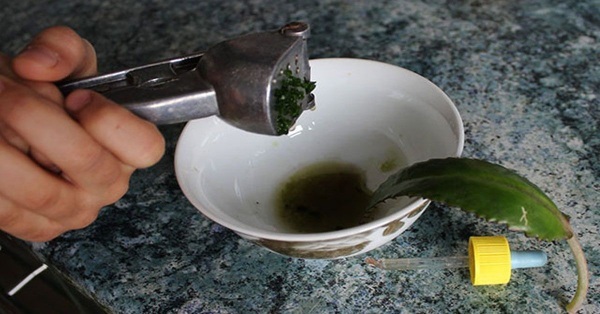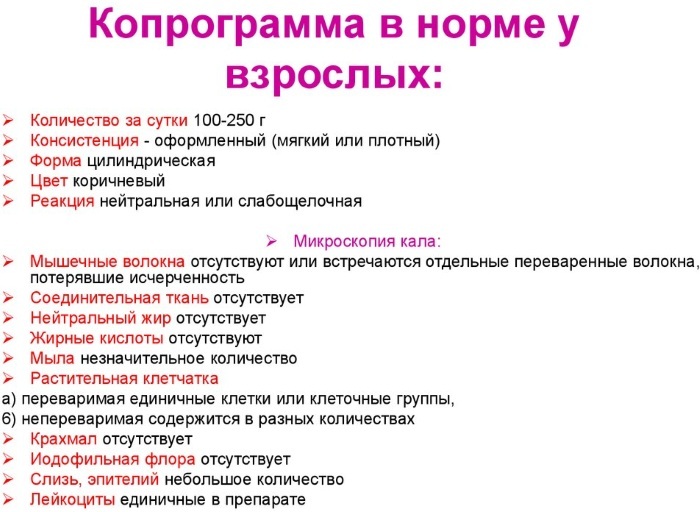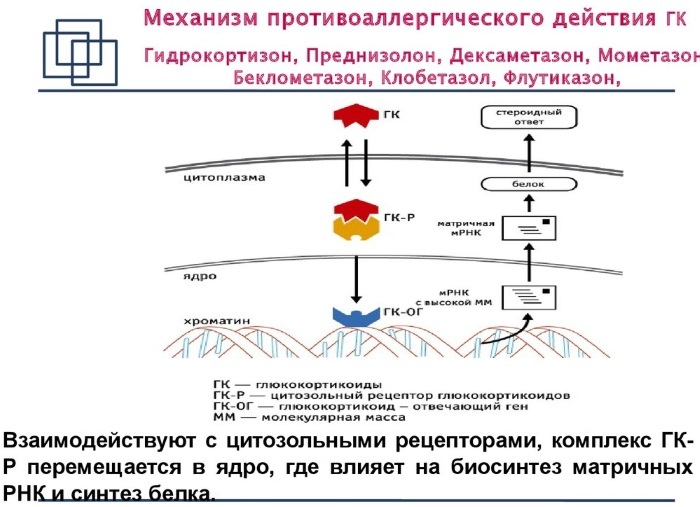Content
- Types of inflammation
- Stages and degrees
- Symptoms and Signs
- Causes
- Diagnostics
- Treatment methods
- Drug treatment
- Folk remedies
- Other methods
- Possible consequences and complications
- Sciatica video
Sidal nerve is the largest in the human body. It connects the spinal cord to the lower limbs, providing mobility and sensitivity. Inflammation of the sciatic nerve is called sciatica in medicine. The pathology is accompanied by a set of symptoms with increasing pain and dysfunction of the pelvic organs.
Types of inflammation
Depending on the area of compression, there are 3 types of sciatic nerve neuritis:
- upper - compression of the nerve roots in the lumbar region;
- middle - pinched nerve in the sacral region;
- lower - compression of the nerve connecting the buttocks and foot.
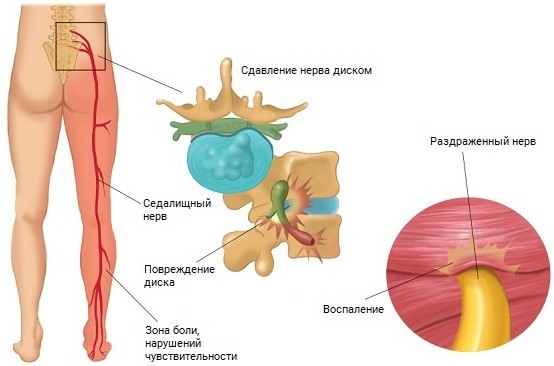
Depending on the origin, there are:
| Primary sciatica | Secondary sciatica |
| It develops as a result of compression of the nerve trunk by a muscle that is seized with a spasm. | The cause of the disease is the pathology of the spine column and hip joints. Also, secondary sciatica can occur against the background of pregnancy, accompanied by diseases of the pelvic organs. |
Stages and degrees
Depending on the severity, there are 3 forms of sciatica:
- Easy - the initial stage of the disease, accompanied by the appearance of discomfort, and mild pain in the back and lower back. Gradually, the pain spreads to the top of one of the legs, and may be aching or shooting.
- Medium severity - The pain reaches the legs and reaches the knees, legs or heels. The patient feels a slight tingling sensation on the skin in the area of the inflamed nerve.
- Heavy - the pain becomes unbearable and limits the patient's physical activity. The feet are sweaty and the toes feel hot. There is a decrease in sensitivity on the back of the thigh and weakness in the muscles of the lower limb. Burning, shooting pains worse with any attempt to move.
Symptoms and Signs
Inflammation of the sciatic nerve can begin with an acute stage, which develops against the background of trauma or severe stress on the spine. Also sciatica can manifest itself as pulling, gradually increasing pain, radiating to various parts of the lower limb.
The sidal nerve (inflammation symptoms associated with intense pain) forms in the lumbar region from smaller nerves and runs down the entire leg. The pinching of the sciatic nerve is unilateral, so the symptomatology manifests itself in the area of one of the lower extremities, as well as in the lower back.
The main symptom of a pinched nerve is pain. It originates in the buttocks and extends to the knee or ankle. The nature of the pain may be aching, pulling or shooting.

Since the sciatic nerve is responsible for all the functions of the limbs, when it is pinched, motor function and sensitivity suffer. Therefore, the patient may lose the ability to move. When probing a limb, there is a flabbiness and relaxation of the muscles of the back of the thigh.
Other symptoms of sciatic nerve inflammation include:
- increased sweating of the feet;
- the appearance of "goose bumps" in the limb;
- discoloration of the skin;
- violation of the act of urination.
Causes
The sciatic nerve (symptoms of inflammation associated with difficulty in motor function) is compressed in the presence of various diseases of the musculoskeletal system. The mechanism of sciatica development is quite simple. Normally, the nerve trunk is located in a narrow space and is surrounded by muscles, tendons, and pelvic bones. Pathological processes leading to an increase and deformation of tissues provoke compression and pinching of the nerve and the vessels that feed it.
As a result:
- the nervous tissue experiences oxygen starvation and accumulates metabolic products;
- vascular permeability increases;
- the functions of the nervous tissue are disrupted.
The reasons for the pinching of the sciatic nerve are conventionally divided into groups:
- Traumatic - unsuccessful intramuscular injection near the nerve, sacrum trauma, hematoma.
- Inflammatory - inflammatory processes in the area of the sacroiliac joint, bone erosion.
- Tumor - sciatic nerve tumors (neurofibromatosis, neurolymphomatosis, neurofibrosarcoma, lymphoma).
- Infectious - the presence in the gluteal or pelvic region of an abscess that has arisen against the background of an infectious process in the gastrointestinal tract.
-
Vascular - changes in the thickness of the iliac artery and its branches.
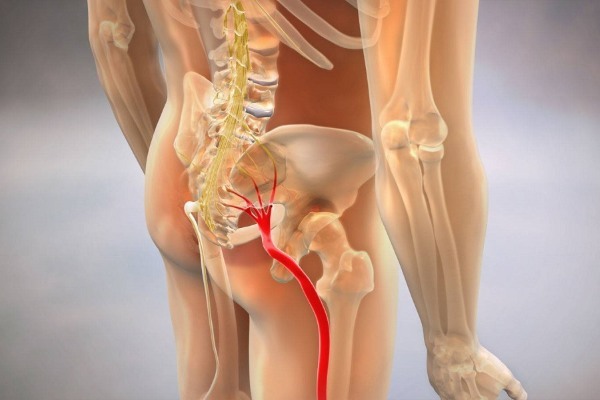
The provoking factors leading to pinching of the sciatic nerve include:
- hypothermia;
- psycho-emotional stress;
- weakening of immunity;
- frequent and severe intestinal constipation.
In addition, sciatica can be the result of physiological displacement of the pelvic bones in women during pregnancy. Also, pinching of the sciatic nerve can be observed in children with juvenile rheumatoid arthritis.
Diagnostics
Sciatica diagnosis consists of several stages. The diagnosis is established on the basis of typical patient complaints, anamnesis, instrumental and laboratory examination methods. A neurologist is involved in diagnosing a pinched sciatic nerve. During the initial examination, the doctor determines the presence of pathology by specific symptoms during flexion and extension of the limbs.
Instrumental diagnostics allows you to determine the degree of pinching of the roots of the spinal nerves, as well as to identify the degree of prevalence of inflammation.
The instrumental methods of examining sciatica include:
-
X-ray of the lumbar spine. The method is aimed at establishing the diagnosis of "spondylosis" - a disease associated with the proliferation of bone tissue of the spine. It is spondylosis that can cause the development of sciatica. X-ray of the lumbar spine is performed in two projections - lateral and straight. Before the examination, the patient is cleansed of the intestines with an enema. The patient is placed on the table and the emitter of the apparatus is placed on the lumbar region. The chest, thyroid gland and pelvic organs are covered with a special film to protect against radiation. After the end of the procedure, the patient receives an image on film or CD on his hands, on the basis of which a conclusion is made. Research cost - from 1,500 to 2,000 rubles.
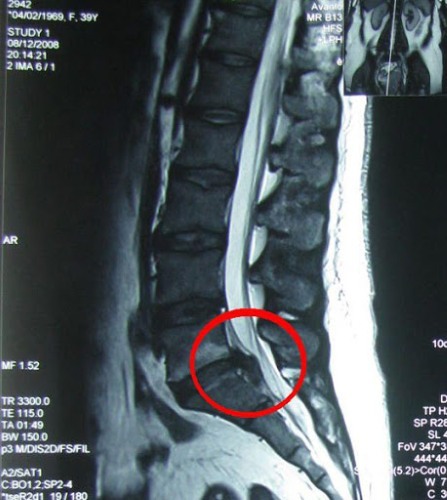
- Ultrasound. The diagnostic method allows you to visualize the structure of soft tissues - tendons, ligaments, cartilage, and identify tumors. Also, the study shows the presence and degree of deformation of the vertebral discs. Ultrasound of the lumbar spine requires preliminary preparation. 2 days before the study, the patient must follow a diet that excludes the use of gas-forming products. On the day of the ultrasound scan, the patient is cleansed of the intestines with an enema. The procedure takes about 30 minutes. The cost of an ultrasound scan is 1500-1800 rubles.
- MRI. If sciatica is suspected, MRI of the lumbosacral spine, sacroiliac joints, or visualization of the piriformis muscle is done. The diagnostic method allows you to determine not only the severity of inflammation, but also to identify its cause. MRI is most effective at showing changes in nerve bundles. The sciatic nerve is well visualized with standard MRI, but contrast media may be required in cases of tumor detection. The drug is injected into a vein near the elbow bend. Research cost - from 5,000 to 7,000 rubles.
- CT scan of the lumbar spine. Computed tomography is a highly informative method that allows you to differentiate pathological changes in the lumbar region. The CT method is based on exposure to X-rays to obtain layer-by-layer photographs and a volumetric image. The photographs obtained give an idea of the condition of the lumbar vertebrae, cartilage, and the structure of nerve fibers. The CT scan does not require any prior preparation. The duration of the study is about 10-15 minutes. The cost of CT scan is about 5,000 rubles.
- Electroneuromyography. Study of the functional state of muscles and the peripheral system. The method is used when the patient has a sensitivity disorder. During the examination, the speed of the nerve impulses along the nerve fibers is determined, the localization of damage to the peripheral nerves and the ability of the muscles to contract are revealed. The essence of the method lies in the effect of electrical impulses emitted by a device - an electroneuromyograph. The impulses act on the muscles innervated by a particular nerve, and the device registers this moment. Research cost - 3500-4500 rubles.
Treatment methods
Sidal nerve (symptoms of inflammation associated with numbness and tingling of the limb) requires a complex therapy, consisting of drug and physiotherapy treatment, as well as the use of therapeutic physical education.
Drug treatment
Several groups of drugs are used to treat sciatica:
- NSAIDs of local and systemic action;
- muscle relaxants;
- hormonal drugs;
- anesthetics.
NSAIDs have anti-inflammatory and analgesic effects. Non-steroidal drugs are used at the initial stage of the disease to relieve the acute period.
The most commonly used:
-
Ibuprofen - a drug in the form of tablets that relieves pain and inflammation. The agent is easily absorbed and completely absorbed from the gastrointestinal tract. The drug quickly penetrates into the joint cavity, creating high concentrations in them. Adults are prescribed 200 mg of the drug 3-4 times a day. The duration of treatment should not exceed 5 days.
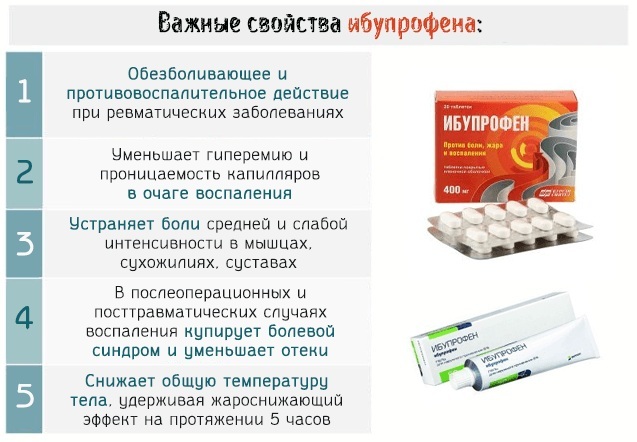
- Ketoprofen - a drug that has anti-inflammatory and analgesic effects. When taken orally, the maximum concentration of the drug is reached after 1 hour. Adults are prescribed 1 tablet in 2 divided doses. The drug should be taken without chewing and washed down with plenty of water.
- Motrin - a drug in the form of tablets to relieve pain and inflammation. Absorption from the gastrointestinal tract is fast and complete. The maximum concentration of the substance in the blood is reached 2 hours after ingestion. The drug is taken orally at 500 mg every 12 hours. The maximum daily dose should not exceed 1200 mg. It is not recommended to take the drug for more than 5 days.
Local NSAIDs are represented by the following drugs:
- Voltaren - gel for external use, which helps to eliminate pain and swelling associated with the inflammatory process. For adults, the drug is rubbed into the skin 3-4 times a day. A single dose of the drug should not exceed 2-4 g. The duration of treatment depends on the indications.
- Nise gel - New generation NSAIDs from the sulfonanilide class. When applied topically, relieves pain in the area of application of the gel. The maximum concentration of the drug is noted by the end of the first day of use. The gel is applied in a thin layer to the area of maximum pain 3-4 times a day. The duration of treatment should not exceed 10 days.
Muscle relaxants are used to relieve painful muscle spasms and relax muscles.
Most often used:
- Mydocalm - a muscle relaxant of central action in the form of tablets for oral administration. The remedy is taken without chewing, and washed down with plenty of water. The recommended daily dose is calculated individually and is 150-450 mg, divided into 3 doses.
- Baclofen - a muscle relaxant of central action, which reduces the tone of skeletal muscles. It has a weak analgesic effect. After oral administration, it is absorbed after 2-3 hours. Adults are prescribed 5 mg 3 times a day for the first 3 days. Then on the 4th day the dose is increased by 5 mg. The maximum daily dose should not exceed 75 mg.
-
Sirdalud - a muscle relaxant with a pronounced analgesic effect. After oral administration, the active substance of the drug is completely absorbed from the gastrointestinal tract. The dosage regimen is determined individually, depending on the severity of the course of the disease.
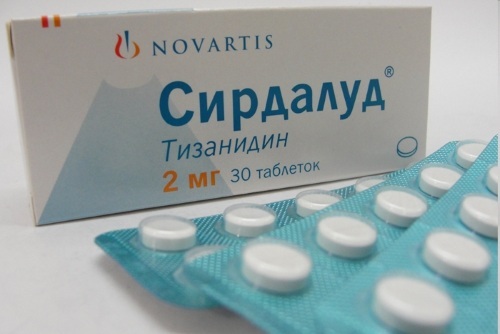
Steroid medications are used in severe cases of sciatica. Hormonal agents are injected and can relieve severe pain when a nerve is pinched.
The group of steroid drugs includes:
- Dexametozone - solution for injection, which has anti-inflammatory, anti-allergic and analgesic effects. the dosage regimen of the drug is determined individually. In the acute period, it is possible to use higher doses - 4-20 mg up to 3 times a day.
- Prednisolone - a synthetic glucocorticoid preparation in the form of injections for intramuscular or intravenous administration. Prednisolone is administered in addition to the systemic use of drugs at a dose of 75-125 mg per day. The duration of treatment is up to 10 days.
Folk remedies
The sidal nerve, when inflamed, provokes severe pain and discomfort. To relieve symptoms, they resort to the use of traditional medicine.
The most effective methods include applications and compresses based on homemade decoctions and ointments:
- Compress with potatoes and horseradish. Grate the raw potato tuber on a fine grater and squeeze out the excess liquid. Add 1 tsp to the crushed mass. l. honey and 1 tsp. l. chopped horseradish. Put the resulting mixture on a gauze bandage and apply to the diseased area, wrapping it with polyethylene. You need to keep the compress for about 15-20 minutes, then rinse the treated skin area with water.
- Warming ointment with fir oil and valerian tincture. Mix 2 tsp. l. fir oil and 1 tsp. l. valerian tinctures. Rub the resulting solution into the painful area up to 3 times a day.
- Ointment based on bay leaf and butter. Chop a handful of bay leaves, mix with 2 tbsp. l. chopped juniper needles and 60 g softened butter. Rub the ointment into the skin of the affected area 3 times a day.
- Black radish compress. Grate the fruit of a black radish on a fine grater, wrap in gauze and attach to a sore spot. You need to keep the compress for 15-20 minutes.
Other methods
The sedentary nerve (the symptoms of inflammation are associated with the difficulty of movement) at the time of pinching requires an integrated approach to treatment. Physiotherapy is actively used to eliminate unpleasant symptoms.
When treating sciatica, I use the following physiotherapy methods:
-
Electrophoresis. The essence of the procedure consists in the delivery of medications to the focus of inflammation through the mucous membranes and skin using a constant electric field. With the help of the procedure, the drug enters the patient's body with positively and negatively charged ions through the sebaceous and sweat glands. Electrophoresis allows you to relieve pain, weaken muscle tone and stop the inflammatory process.

- Exercise therapy. Physiotherapy is effective during the elimination of the acute period. The set of exercises is selected individually, taking into account the characteristics of the patient. Stretching exercises are effective in unblocking the nerve. They help relieve pain and relax muscles. During the implementation of the complex, it is important not to make sudden movements and monitor the general condition.
- Massage. The course of massage is prescribed after the relief of the main pain syndrome. The massage movements relax the muscle tissue and help reduce the risk of re-pinching.
In addition to physiotherapy methods, manual therapy is used, which allows you to quickly remove functional blocks in the spine. The essence of manual therapy is the use of hands for the purpose of therapeutic effects on the patient's body using special methods and techniques. Tactile manipulations of various depths allow you to get rid of spasms in the projection zone of the sciatic nerve.
Possible consequences and complications
The sedentary nerve (inflammation symptoms associated with the manifestation of pain of varying intensity) is responsible for mobility of the lower limbs, so pinching it can lead to immobility and loss performance.
Lack of timely treatment can lead to the development of other complications:
- the transition of the disease to a chronic form;
- limb muscle atrophy;
- violation of the act of urination;
- violation of the stool.
The sidal nerve and its branches are considered the most commonly injured nerve in the lower limb. It is often damaged by the introduction of intramuscular injections, fractures, injuries. Also, the cause of sciatica can be inflammatory diseases of the musculoskeletal system. Symptoms of sciatic nerve inflammation are pain of a different nature and intensity, as well as a decrease in motor function and sensitivity.
Sciatica video
Pinched sciatic nerve:

